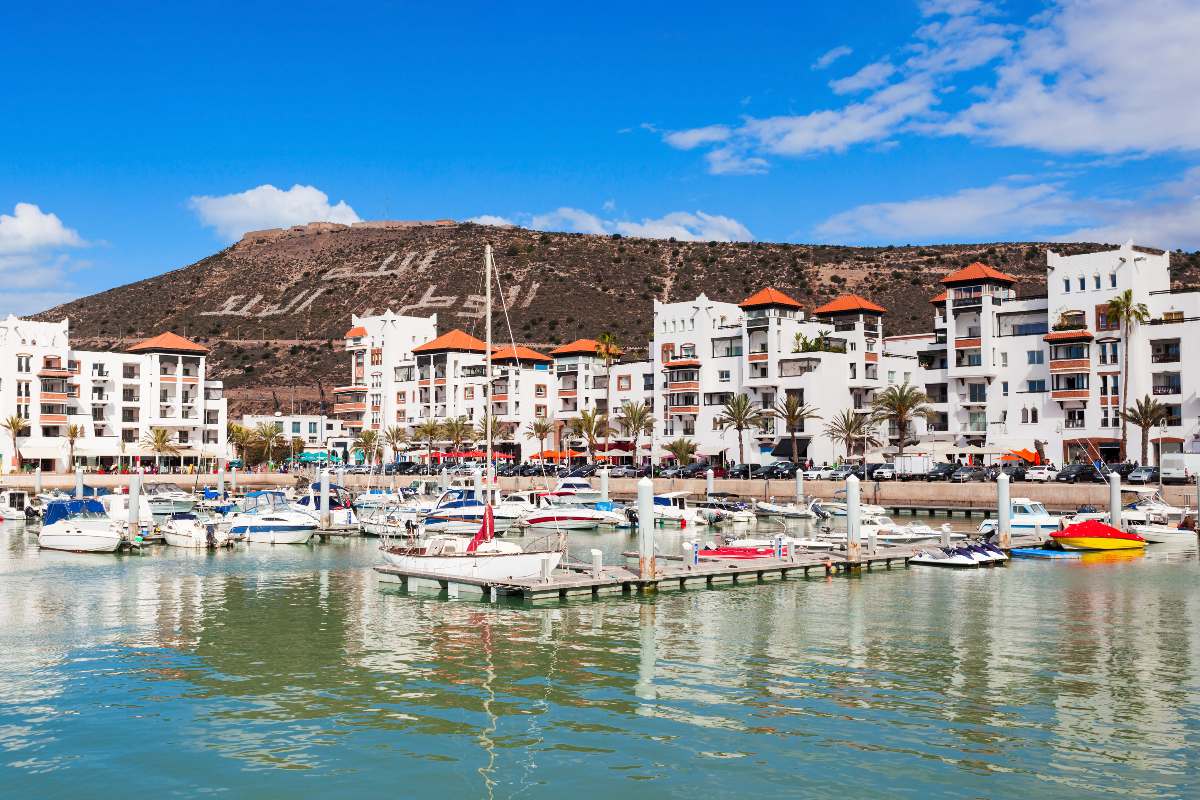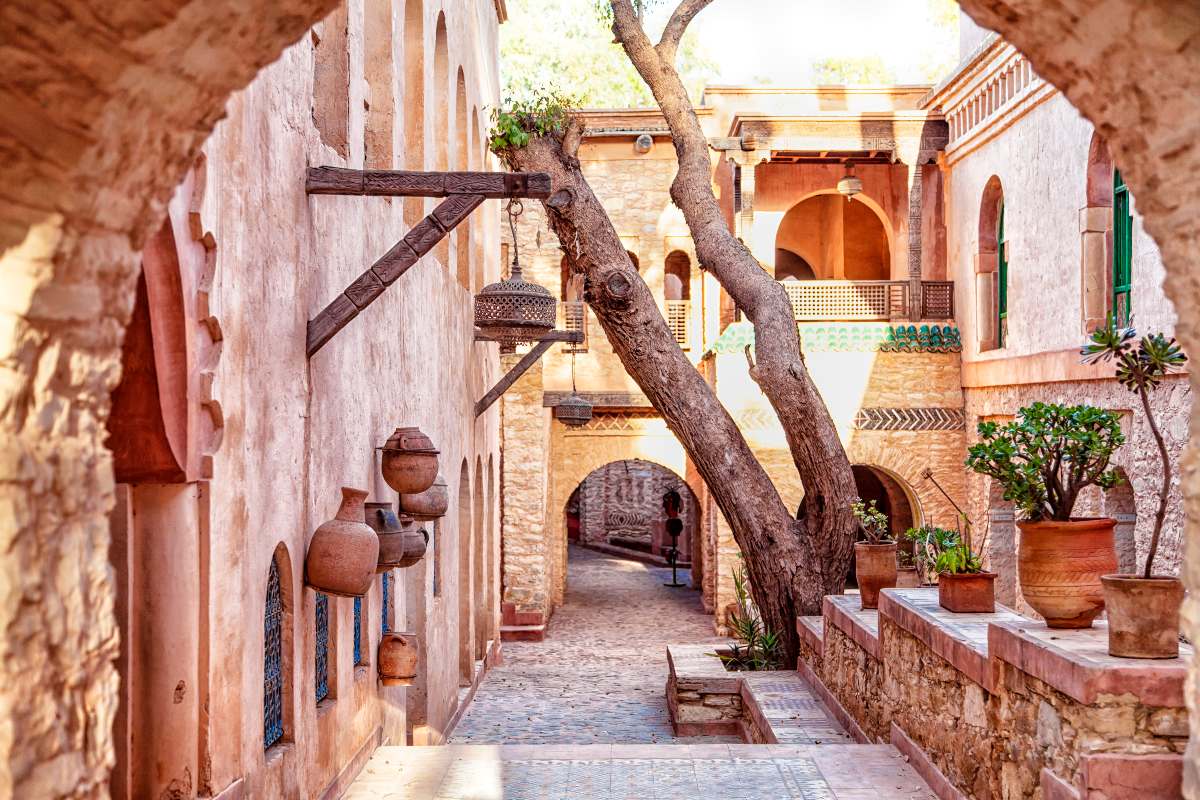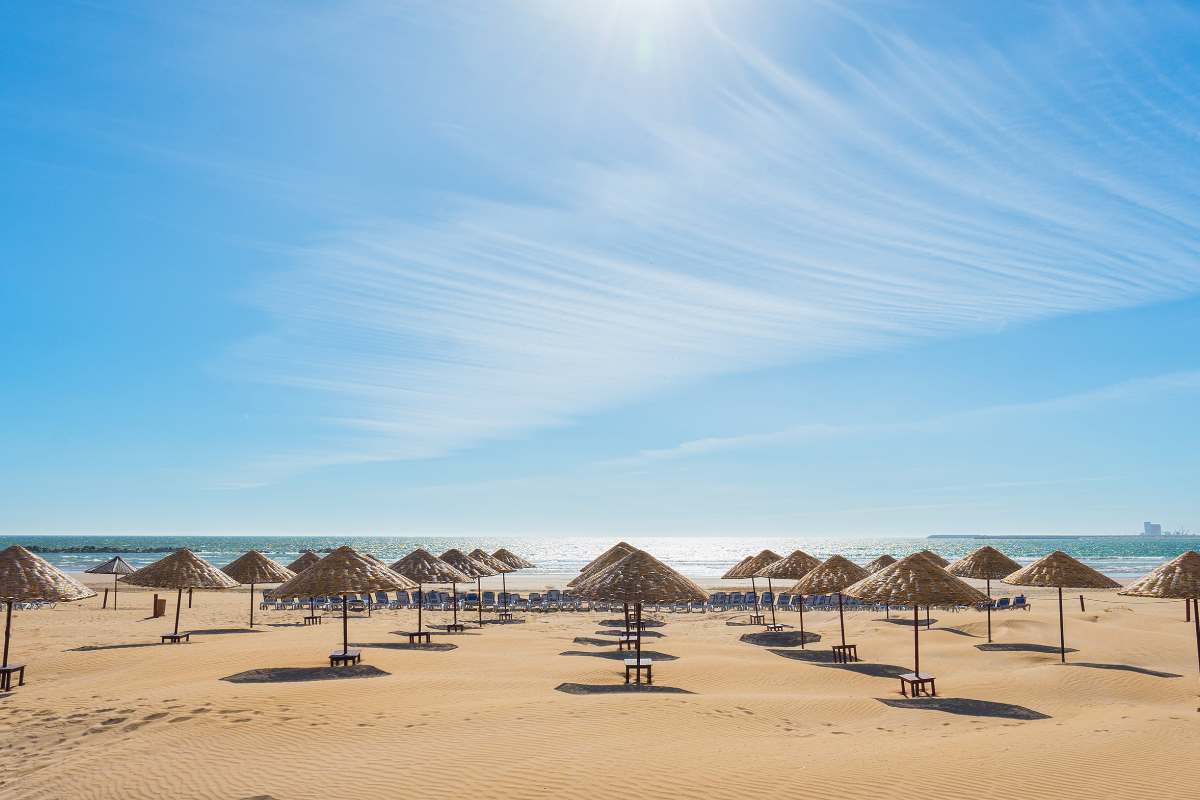Agadir is a lively and active city for its more than 600,000 inhabitants, but at the same time it is a peaceful destination for its visitors, who value above all its sun and beaches. In recent times it has been able to develop proposals aimed at premium travelers, making it one of the most important cities in Chic Morocco’s catalog.
Agadir is on the Atlantic coast, in the south of the country. Its location is privileged not only because of its southern latitude, but also because it is in a bay sheltered from its surroundings by a hill that, as we explain below, has become one of its main tourist attractions.
Its climate is warm practically all year round, with more than 300 days of sunshine. However, the Atlantic breeze that caresses its coastline tempers the temperatures in the hottest months of the year and makes this coastline a very popular destination for surfing and related water sports.
It is the capital of a vast region called Sus-Masa, which extends from the Atlantic coast to the heart of the Sahara desert. It is the most populated city in the area, as its surroundings lack large cities, which reinforces its role as a destination of disconnection for many travelers.

These are the distances that separate it from other tourist destinations in the country:
The best way to get directly to Agadir is by plane: given its great international projection as a sun and beach destination all year round, the airport of Agadir-Al Massira (about 25 km from the city) has an intense activity of tourist flights from many countries, such as Germany, Belgium, Netherlands, United Kingdom or France. It is also connected by regular flights to other Moroccan cities, such as Fez, Rabat, Tangier and Casablanca.
Another way to get to Agadir is through a cruise, in circuits that usually stop in the Canary Islands. However, these cruises are always of a private nature, and there are no regular ferry lines from the port of this city.
Given its remoteness from the rest of the country’s cities, road connections are long, especially public transport solutions. Moreover, Agadir is not currently integrated into Morocco’s railroad network, not even by conventional trains, although a high-speed connection to Marrakech is planned for the future.
Therefore, traveling by car to Agadir makes more sense if you arrive as part of a tourist circuit from cities like Marrakech or Casablanca, and stopping in other intermediate cities of interest, such as Essaouira and Taghazout, or as the end of a trip from Marrakech in search of relaxation, sun and beach.
Agadir is not the most monumental city in the country, nor is it the one with the most historical remains still standing. The reason is simple: in 1960 it suffered a devastating earthquake that destroyed 80% of the urban area, causing not only a humanitarian tragedy with nearly 15,000 fatalities, but also a great loss of property.
Therefore, when speaking of the history of Agadir, it is necessary to make an exercise of imagination, because very little remains of its past, which, by the way, goes far back in time: it is usually identified with the Phoenician Gadir. In the 15th and 16th centuries it was an important strategic enclave for the Portuguese during their military and commercial expansion across the Atlantic.
In 1541 it was conquered by the troops of Mohammed ech-Cheik, founder of the Saadian dynasty, which led to great prosperity immediately afterwards, thanks in large part to the export of gold, dates, furs, wax and, above all, sugar. But the decline of sugar cane cultivation caused Agadir to go into decline, accentuated by the decision of the Alaouite Sultan Mohammed ben Abdallah to promote the port of Essaouira.
Thus, during the 19th century and until World War II it remained a small fishing and farming village. When the earthquake struck Agadir in 1960, these two primary sector activities were experiencing a certain boom. And when it was reborn from the ashes, it did so as a major industrial center for fish processing and, above all, as a major resort for Western tourists.

Spending a vacation in Agadir is a very easy decision to make for most tourists, who know its potential. But if you need convincing, here are some of the compelling reasons that can tip the scales in favor of this Atlantic city:
As we said, the devastating earthquake that struck Agadir in 1960 explains the scarcity of historical monuments that remain standing. However, the little that remains is worth knowing and visiting, something that can be interesting as a cultural pastime within a vacation stay of several days. In addition, other leisure proposals have emerged since then that attract many tourists during their vacations. This is a list of the main ones, both in the city and its surroundings:

As we said, one of the great attractions of Agadir is its role as a premium tourist destination. Leisure infrastructures such as the marina and golf courses are some of the elements that make the difference, but not the only ones. Here are some of the most interesting services for high-end travelers:
As you can see, there are many proposals that position Agadir as a great pole of premium tourism. But if you want to design a tailor-made trip and book personalized quality services, just contact Chic Morocco: we can organize your vacation in this sun and beach destination, or a more extensive tour of the country with this city as a starting, ending or passing through point, but always up to your expectations.







